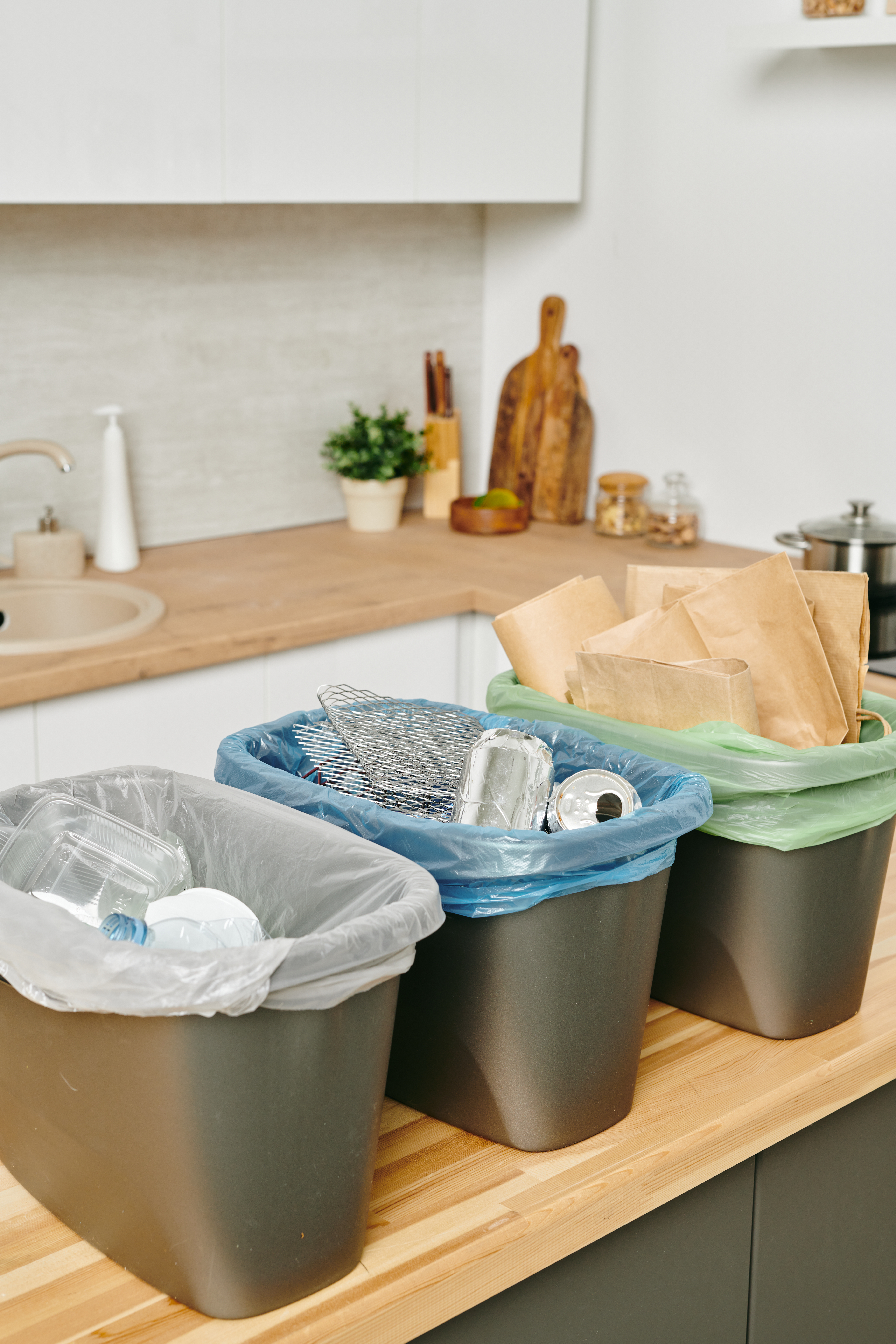
Bins are usually placed in the cabinet under the sink or in a deep pull-out drawer. The latter solution is particularly popular in modern kitchens, where owners care about careful interior organization and create space for waste separation. Find out which containers are best for biodegradable waste, glass, or plastic packaging.
How to separate waste?
Waste separation bins come in many sizes and shapes, so everyone will find something suitable. Before deciding on a specific system, consider the location of the containers and their functionality. First, measure the width of the cabinet and check if there are any installation limitations. Next, consider the access to the bins. The most convenient solution is a pull-out front. Opting for drawers with the Push to Open system ensures that waste separation will be safe and hygienic. The last item to determine before purchasing a sorted waste system is the number of bins. It is worth familiarizing yourself with the municipal company's guidelines for this purpose.
Waste separation - kitchen bins
Aesthetic plastic containers, available in five colours according to the Unified Waste Management System principles, are the most convenient way to separate waste. The five waste categories include paper, glass, metals and plastics, bio-waste, and mixed waste. Green bins are for glass containers and empty bottles, blue bins for office paper, newspapers, and clean packaging; cans and metal waste go into the blue one, kitchen waste from cooking (food scraps, animal bones, eggshells) into the brown one, while unclassified waste like pet feces into the black one. Depending on the kitchen design, waste bins can be kept in a traditional openable cabinet, a deep drawer, or an integrated sorter with a cabinet. Module bins and bins inserted into a drawer should be appropriately sized (ideally, if the system fills the entire drawer space).

Stainless steel waste separation bins - are they worth it?
The right bin can significantly ease waste separation, so it's worth choosing containers made from durable materials. The best choice is stainless steel bins. Plastic containers are less hygienic due to the porous structure of plastic. Hazardous waste requires a special segregation approach, so the safest solution is an aesthetically mounted bin equipped with a foot-operated lid mechanism.
Kitchen arrangement - drawer waste bin
Using a set of kitchen waste separation containers helps maintain cleanliness and fully utilize drawer space. Built-in containers, with additional compartments for cleaning accessories or rubbish bags, offer a convenient alternative to traditional bins. Depending on your needs, you can choose systems with or without lids. Manufacturers offer a wide selection of containers suitable for different cabinet widths. Easy to install and made from durable materials, they allow for convenient use over many years.
It's worth separating waste! Drawer dividers
Kitchen waste separators have a similar structure to system containers but take up less space, making them a better choice for small kitchenettes. This solution is ideal for individuals living alone and those who generate small amounts of waste during the day.
Waste separation bins built into the kitchen countertop are an extremely practical solution suitable for any modern kitchen. The only drawback of such containers is their relatively small size. Besides, if you separate waste in the kitchen, it's hard to imagine installing five bins on the countertop. When choosing this solution, you must consider the choice of fraction. The safest choice is a single bin for bio-waste. You can then easily sweep the waste generated during meal preparation into the countertop opening.


















